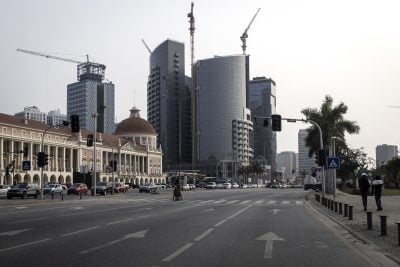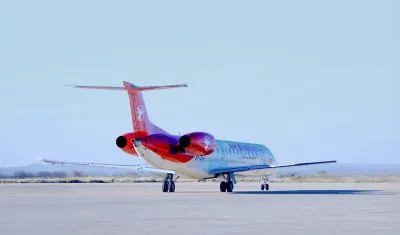While modern railway systems can transport goods and people over long distances, most journeys must be completed by road and so it is vital that road and rail infrastructure is properly integrated.
New inland container terminals are being developed across Africa to allow containers to be quickly and efficiently transferred from rail to waiting haulage trucks. Yet even such an integrated approach will fail without surfaced roads of sufficient quality to serve very heavy vehicles at all times of the year.
As part of plans to diversify the country’s transport options, the government of Ethiopia is pressing ahead with the construction of a new road to Kenya. The Mombasa-Nairobi-Addis Ababa Highway will allow Ethiopian traders to access the port of Mombasa and possibly also a second major port planned at Lamu in the longer term.
The AfDB has agreed to provide a $125m loan to fund the second phase of the project. The road is viewed as a key link in the Trans-African Highway Network project, which seeks to promote trade within Africa by strengthening the continent’s road network. Africa has a short coastline in comparison to the size of the continent and so land-based trade must be a key component of a successful continental economy.
The toll roads debate
The biggest obstacle to improving road infrastructure in Africa has always been funding. Even in the continent’s biggest economy, South Africa, tolls have been introduced to finance road upgrades on many of the country’s main long distance highways.
However, attempts to replicate this model within urban areas have met with stiff opposition. The government of Johannesburg’s Gauteng Province has been keen to introduce tolls but opponents argue that public transport service should be improved first, in order to give motorists a realistic option.
As in many parts of the industrialised world, the government of Gauteng argues that it can use income from road tolls to improve both road infrastructure and public transport. However, the big question centres on what should come first: improving public transport or introducing road tolls.
Governments usually prefer the latter, while consumer groups favour the former. Gauteng Province wants to use the new Gautrain system, which uses high speed trains to connect central Johannesburg with the city’s prosperous northern suburbs, Pretoria and Johannesburg’s main airport. Stations on the network are to be developed as bus intersections but it is proving understandably difficult to persuade motorists to leave their cars for public transport.
To date, 42 toll gates have been erected in the province covering 185 km of road, while other new toll routes, including the Wild Coast and the Cape Winelands Toll Highway Project have also been developed. However, in October, Minister of Transport Sibusiso Ndebele ordered all work on such schemes to be suspended in order to give time for a public consultation programme. A spokesperson for the Ministry of Transport said: “We want to proceed with a clear conscience; we want all views to be heard. We must play our role as a government that consults and not one that pushes decisions down people’s throats.”
Toll collection was scheduled to start next February but despite the delay, Finance Minister Pravin Gordhan says that the basic policy of charging for road use will be maintained.
While most press attention has focused on Mozambican port and rail projects, significant investment is also being put into the country’s road network, including the construction of roads that have long been degraded or where none previously existed. For instance, a consortium of China Communications Construction Company (CCCC) Group, China Henan International Cooperation Group (Chico) and Gabriel Couto of Portugal has just begun to redevelop the 348km road between Cuamba and Nampula in the underdeveloped north of the country.
As on many other transport schemes in the country, funding has been provided by development agencies, including the Japanese International Cooperation Agency, the AfDB and the South Korean Export Import Bank. Total development costs are put at $267m but the government of Mozambique hopes to recoup much of its investment through increased trade along this section of the
Nacala Corridor.
Want to continue reading? Subscribe today.
You've read all your free articles for this month! Subscribe now to enjoy full access to our content.
Digital Monthly
£8.00 / month
Receive full unlimited access to our articles, opinions, podcasts and more.
Digital Yearly
£70.00 / year
Our best value offer - save £26 and gain access to all of our digital content for an entire year!
 Sign in with Google
Sign in with Google 


